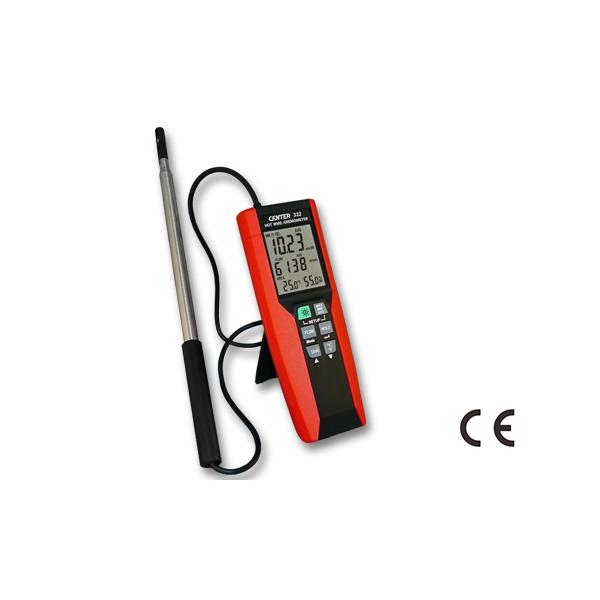Anemometer Innovations: The Most Recent Modern Technology for Wind Speed Measurement
Anemometer Innovations: The Most Recent Modern Technology for Wind Speed Measurement
Blog Article
Exploring the Functions and Benefits of Anemometers for Weather Lovers and Professionals
From cup anemometers to sonic anemometers, each type brings its special collection of benefits and applications, losing light on various facets of climatic conditions. As we dive into the functions and benefits of anemometers, a much deeper understanding emerges not just of dominating climate phenomena yet likewise of the more comprehensive ramifications for fields like wind energy manufacturing and ecological research study.
Relevance of Anemometers in Weather Condition Tracking
Anemometers play an important duty in weather surveillance by giving precise dimensions of wind rate, assisting in projecting and understanding weather condition patterns. These instruments, varying from traditional mug anemometers to modern-day ultrasonic anemometers, are essential for meteorologists, researchers, and climate enthusiasts alike.

Kinds of Anemometers and Their Applications
With the essential role anemometers play in climate monitoring and forecasting, recognizing the different types of these instruments and their applications comes to be necessary for experts and lovers in the area. The most typical sorts of anemometers include cup anemometers, vane anemometers, hot-wire anemometers, and ultrasonic anemometers. Mug anemometers include 3 or 4 cups mounted on horizontal arms that revolve with the wind, measuring its rate. Vane anemometers, on the various other hand, make use of an easily turning vane to straighten with the wind instructions, providing both wind speed and instructions measurements. Hot-wire anemometers operate based upon the principle of convective warm transfer, where the cooling effect of the air circulation is determined to identify wind speed. Ultrasonic anemometers use ultrasonic noise waves to calculate wind speed and instructions accurately.
Cup anemometers are appropriate and robust for basic climate surveillance, while vane anemometers are favored for directional measurements. Ultrasonic anemometers are non-intrusive and supply high accuracy, commonly made use of in research study and specialized weather condition monitoring applications.
Advantages of Using Anemometers in Projecting
In meteorology, the use of anemometers provides indispensable benefits for enhancing the accuracy of climate projecting. Anemometers determine wind rate and instructions, supplying vital data for anticipating climate patterns. By including wind information right into forecasting designs, meteorologists can much better understand the motion of weather systems, anticipate adjustments in climatic problems, and problem much article source more specific projections.
Additionally, anemometers play a crucial duty in evaluating potential weather condition hazards. Monitoring wind speeds helps forecasters anticipate severe climate occasions such as cyclones, tornadoes, and winter months storms with greater accuracy. This early warning system enables authorities to release prompt informs and implement essential safety measures, lowering the dangers to life and residential or commercial property.
In addition, anemometers help in optimizing eco-friendly power manufacturing. By examining wind patterns, meteorologists can recognize suitable locations for wind farms and predict energy output, adding to the reliable generation of wind power.

Anemometers in Wind Power Production
Provided the essential role anemometers play in offering exact wind information for climate projecting and hazard evaluation, their value expands to the realm of wind energy production. Anemometers are crucial tools in the field of wind energy, where the measurement of wind rate and instructions is important for figuring out the feasibility and efficiency of wind generator setups. By accurately measuring wind rates at varying elevations, anemometers aid optimize the you can find out more positioning and design of wind turbines to take full advantage of energy result.
In wind ranches, anemometers are tactically positioned to collect real-time wind information that is used to evaluate the possible energy manufacturing of a website. This information contributes in identifying the economic stability of wind energy projects and in forecasting energy generation to make sure grid stability. Additionally, anemometers help in keeping an eye on wind conditions to maximize wind turbine performance, prevent damage from high winds, and make sure the security of personnel operating in the vicinity of wind turbines.
Enhancing Weather Understanding With Anemometers

Anemometers play a crucial role in improving our understanding of microclimates. These localized climate condition can vary considerably from wider regional projections, making it vital to have accurate data for particular locations. anemometer. By strategically positioning anemometers in various areas, researchers can collect in-depth info on how wind behaves in different surfaces, city atmospheres, or bodies of water
Additionally, anemometers add to enhancing weather projecting versions by giving real-time data on wind habits. This information is especially valuable for anticipating extreme weather condition occasions, enhancing farming methods, and supporting industries like aviation and maritime navigating. In general, anemometers are indispensable tools that enable us to delve deeper into the complexities of weather condition systems, eventually causing more better-informed choices and exact forecasts.
Verdict
Finally, anemometers play an essential role in weather condition monitoring and projecting by gauging wind speed and direction. They are necessary devices used by climate fanatics why not try these out and professionals to gather exact information for forecasting climate patterns and examining prospective effects. Anemometers additionally have applications in wind energy production, more highlighting their importance in both meteorology and renewable resource sectors. On the whole, anemometers add to improving our understanding of weather condition phenomena and boosting projecting capacities. anemometer.
From cup anemometers to sonic anemometers, each kind brings its distinct collection of applications and benefits, losing light on different aspects of atmospheric conditions. These instruments, ranging from conventional cup anemometers to modern-day ultrasonic anemometers, are important for meteorologists, researchers, and weather fanatics alike. The most typical types of anemometers consist of mug anemometers, vane anemometers, hot-wire anemometers, and ultrasonic anemometers. Mug anemometers are durable and appropriate for basic climate tracking, while vane anemometers are favored for directional measurements. Anemometers are important tools in the field of wind energy, where the dimension of wind rate and direction is critical for establishing the expediency and effectiveness of wind turbine setups.
Report this page